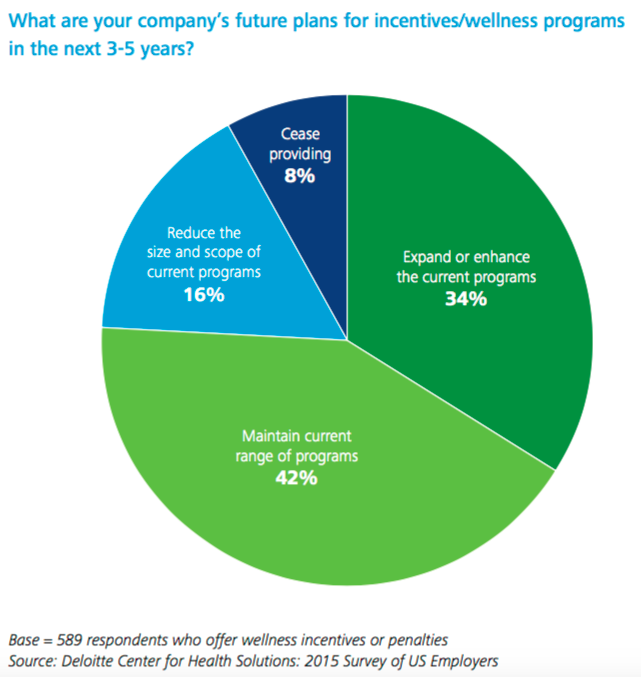Transparency is extremely important to us, so we are letting you know that we may receive a commission on some of links you click on from this page. See our disclaimer.
A 2015 Survey of Employers and Health Care Consumers conducted by Deloitte Consulting brought attention to increased interest in wellness programs. Despite the challenges associated with building an evidence-based program that’s sensitive to the needs of employees, both businesses and health care consumers continue embrace programs as opportunities to increase health and wellbeing.
 Preventing Chronic Illnesses
Preventing Chronic Illnesses
Deloitte credits the rise in chronic illnesses for a new emphasis on wellness in the workplace. The authors of the survey reference a 2009 study that reinforces the connection between health and productivity. The study suggests that lost productivity associated with illness costs companies 2.3 times more than medical and pharmacy costs. In particular, obesity, arthritis, depression and back or neck pain lead to productivity-related costs for companies.
As the Deloitte authors summarize, “Because Americans spend so much time at work, and because the effects of unhealthy lifestyles can impact attendance (absenteeism) and reduce performance (presenteeism), the number of employer wellness programs has been on the rise.” Individuals with chronic illnesses are just as willing to participate in programs as their healthier counterparts, making new programs a valuable option for employers and consumers alike.
Companies Maintain or Scale Up Programs
The majority of employer respondents plan to scale-up their programs or maintain the current size. To maximize the impact, Deloitte recommends that you cater your specific wellness programs based on the input of your employees. Apple, for example, gave their staff 30 minutes a day to exercise and meditate after gauging their needs through a survey. As work days become longer, these extra opportunities for disease prevention offer a valuable outlet for employees.
Positive Consumer Response
To compete with other companies for new recruits, employers frame wellness programs as a perk for new team members. Health care consumers agree, as 91 percent of respondents perceive the programs as “put in place to help improve employee health.” The same percentage of consumers also believe that companies embrace wellness programs to cut down on employer costs. The most effective wellness programs focus build both of these perceptions by emphasizing mutual needs: lower healthcare costs, better health, and a more productive work day.





0 Comments